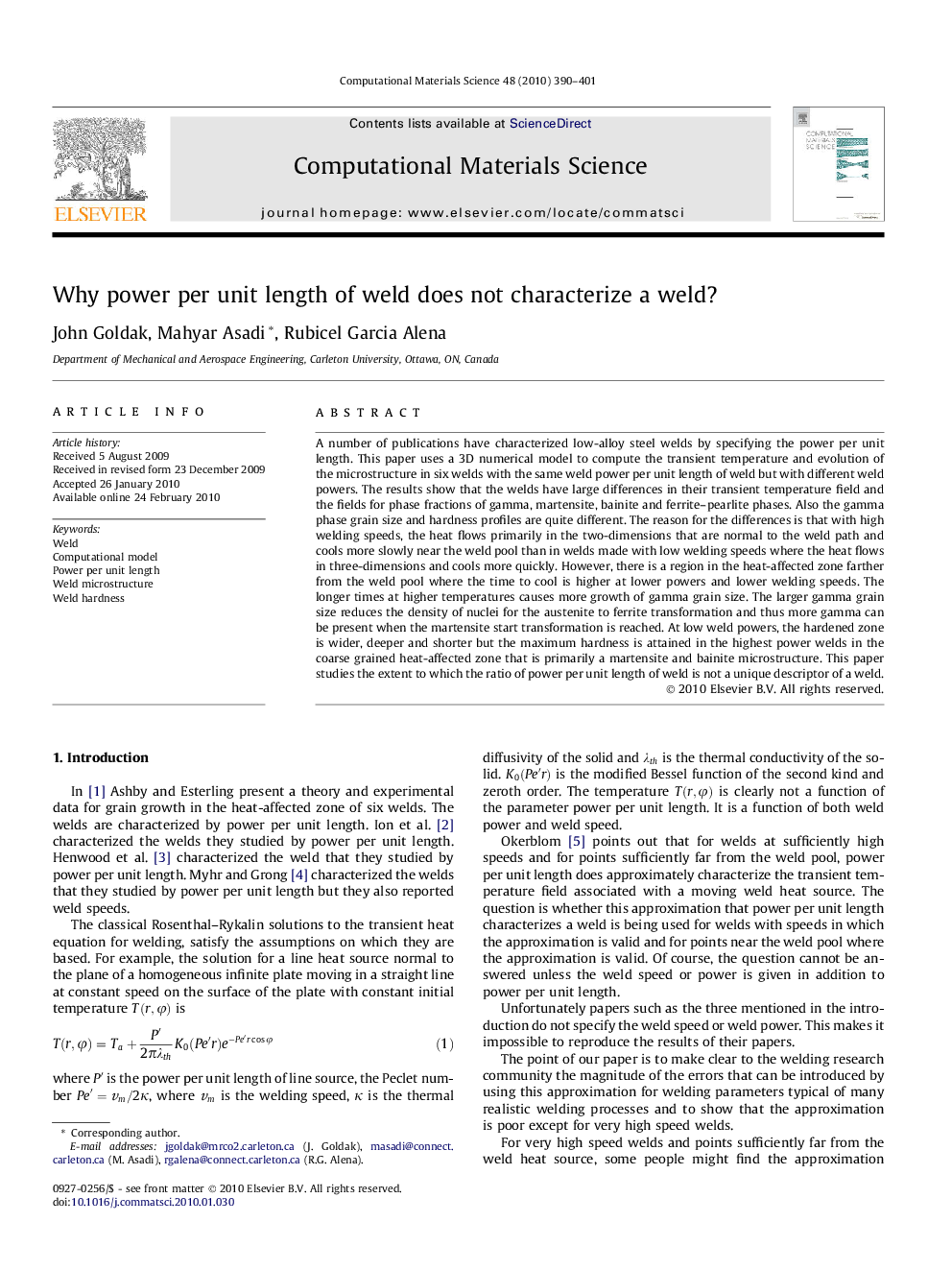| کد مقاله | کد نشریه | سال انتشار | مقاله انگلیسی | نسخه تمام متن |
|---|---|---|---|---|
| 1562726 | 999595 | 2010 | 12 صفحه PDF | دانلود رایگان |

A number of publications have characterized low-alloy steel welds by specifying the power per unit length. This paper uses a 3D numerical model to compute the transient temperature and evolution of the microstructure in six welds with the same weld power per unit length of weld but with different weld powers. The results show that the welds have large differences in their transient temperature field and the fields for phase fractions of gamma, martensite, bainite and ferrite–pearlite phases. Also the gamma phase grain size and hardness profiles are quite different. The reason for the differences is that with high welding speeds, the heat flows primarily in the two-dimensions that are normal to the weld path and cools more slowly near the weld pool than in welds made with low welding speeds where the heat flows in three-dimensions and cools more quickly. However, there is a region in the heat-affected zone farther from the weld pool where the time to cool is higher at lower powers and lower welding speeds. The longer times at higher temperatures causes more growth of gamma grain size. The larger gamma grain size reduces the density of nuclei for the austenite to ferrite transformation and thus more gamma can be present when the martensite start transformation is reached. At low weld powers, the hardened zone is wider, deeper and shorter but the maximum hardness is attained in the highest power welds in the coarse grained heat-affected zone that is primarily a martensite and bainite microstructure. This paper studies the extent to which the ratio of power per unit length of weld is not a unique descriptor of a weld.
Journal: Computational Materials Science - Volume 48, Issue 2, April 2010, Pages 390–401